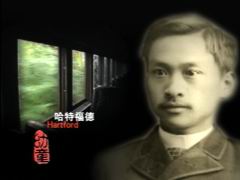Source: CCTV.com
08-14-2006 15:48

The boy students lived two or three together in American families. They quickly adapted themselves to the American way of life. The Chinese Educational Mission not only required the local families to ensure their time to study Chinese everyday, but asked the students to assemble every three months in the Mission building to honor their Confucian obligations by studying ‘The Five Classics’, including ‘The Book of Poetry’, ‘The Book of History’, ‘The Book of Rites’, ‘The Book of Changes’, etc.
The Selection Rules stated that on the special days of the Chinese lunar calendar, the two commissioners should convene the students, and preach the royal orders and official mandate to ensure that they grow into obedient subjects of the Qing emperor. They must pay homage to royalty and respect their superiors. These tenets should preserve the young students from the mental corruption of heresy.
The American magazine Harper’s Weekly published a caricature in 1875 on the Chinese students’ regular study in the Chinese Educational Mission. The Chinese teacher was depicted as reproaching his students, while holding a newspaper on which was written ‘Freedom’. Apparently freedom is what the Qing government strove to curb among the students. What their Chinese studies fostered was like this: a boy student—Huang Xuangui, who, when in America, wrote a poem:
Ten years spent in academy, proof undenied,
True riches and honor in study reside
As of turtle surfacing from a thousand overlapping waves
and osmanthus blooming to perfume a ten thousand miles
Or of the dragon revealing talons in the billowy depth
and the phoenix soaring beyond the heaven ninth
Thrive I shall in the imperial exam
Straight to bolster and pillar the state
The boy students recalled when in China they never worried about their appearance. But now in America they were reluctant to go out and hated being followed by a crowd of neighborhood kids calling them ‘Chinese girls’. At first the insulting confrontation ended in bruises on both sides. But over time, embarrassment won out, and the boys quietly traded their long Chinese gowns for western clothes. Since the American schools had physical education lessons never seen in a Chinese curriculum, the long gown proved to be a great bother. Hence the Chinese Educational Mission officials gave tacit agreement. But the queue, which defined their identity as subjects of the Great Qing Empire, must not be touched.
These boys from an ancient empire wearing long queues down their backs surprised New England even more when they overcame the language barrier in slightly more than one year. Now they had graduated from the grammar schools and were ready to enter high schools.
These are some of the students’ yearbooks kept in the Connecticut Historical Society, written in the spring of 1874, only one year after the first group of students arrived in America.
The old newspapers recorded how the Chinese students soon prevailed in class, and how their academic excellence was balanced by their versatility. The graduation wishes they left for other students were often written in both English and Chinese, with both pen and brushes, and often illustrated.
